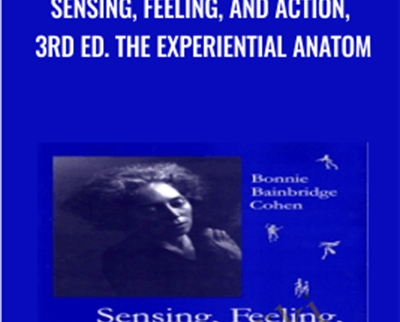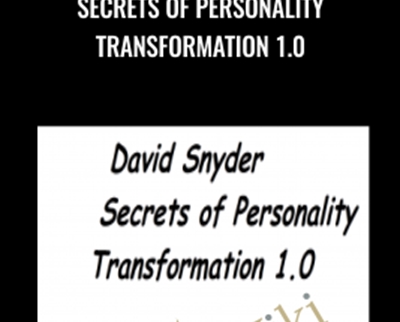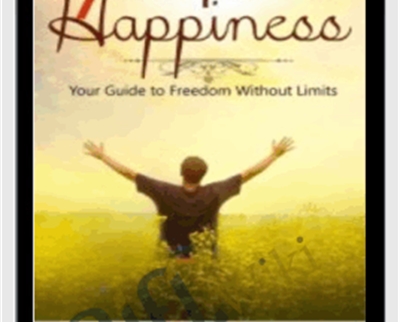Flowing Body Flexible Mind – Rich Frye
Original price was: $24.00.$13.00Current price is: $13.00.
Flowing Body Flexible Mind – Rich Frye Download. We all learned to shut down or otherwise “manage” our sense of aliveness as children. Maybe our spontaneit…
Salepage link: At HERE. Archive:
Flowing Body, Flexible Mind Lesson Outline
1. Aliveness: Lengthening sides, opening breathing.
We all learned to shut down or otherwise “manage” our sense of aliveness as children. Maybe our spontaneity scared our parents, maybe it made them angry, or maybe it embarrassed them. But we got the message: stifle your aliveness and spontaneity. We all have our own issues about that, and the ways we limit our expressions of aliveness and spontaneity also limit our freedoms of movement and of choice. This lesson enhances a sense of aliveness through explorations of bending and twisting the entire spine, freeing the ribs for deeper breathing, improving energy flow, softening the trunk, and exploring relationships among breath, body, and sense of aliveness.
2. Grounding: Standing on your own two feet.
Our language is replete with references to the cultural importance of standing–taking a stand, having standing, standing on your own two feet, and so forth. Though we are designed to walk upright, our fears, beliefs, injuries, and social conditioning all create patterns of unnecessary muscular tension which pull us out of alignment with gravity, keeping us in a constant state of stress. Improving our standing balance improves confidence, strength, and well-being. This lesson works extensively with feet, ankles, legs, and hip joints, changing alignment of feet and legs, connecting spine to earth through feet, and exploring issues of groundedness.
3. Clarity: Connecting hands and feet.
Because of the construction of our bodies and nervous systems, our functional images of ourselves tend to be oriented to our extremities, with a much less clear picture of how our hands and feet are functionally connected to our center and to each other. Like all living organisms, we are constantly moving through a cycle of feeling needs, organizing behavior to satisy our needs, taking in nourishment when it becomes available, and taking time to rest and feel satisfied. Unfulfilled needs create physical and energetic tension until they are relieved or satisfied. When you know what you need, you can begin to create ways to get it. This lesson works with connecting hands and feet to trunk, spine, and center, and with joints, limbs, and diagonals. Explores themes of reaching out, making contact, self-observation.
4. Animation: Stabilizing your center of gravity.
Our bodies and nervous systems are the current products of millions of years of evolutionary testing; we are built to learn and to create ways to get what we need. The only thing we can control in this world is our action in this moment. But we are often inhibited in taking actions, ungrounded, off center. Improving the ability to stay with our center improves the effectiveness of our actions. This lesson works with flexing, extending, and twisting the spine, with the pelvis as our center of gravity.
5. Autonomy: Relating the spine to the pelvis.
We are complex social animals who live for an extended period in a state of dependence on others. The transition to independence and autonomy is a rocky one, with many pitfalls associated with the ability to obtain, take in, and savor emotional, physical, social, and sexual nourishments. From childhood disappointments or hurts we’ve learned to distrust, take for granted, or exploit without gratitude many of the good things that come our way. Curiously, real autonomy is associated with the ability to adapt to varying conditions, and to move easily among independence, dependence, and interdependence; we can get by without something when it’s not available, yet we can fully enjoy it when it is. This lesson explores a sense of uprightness as the basis of autonomy, flexibility of the trunk, and functional connections between shoulders and hips.
6. Letting Go: Moving from your center.
Ours is a culture of relentless achievement and constant distraction. We never take time to rest. Coming to rest in conscious inactivity is the natural closure and counterpoint to activity. It’s not about sleeping; it’s about limiting input on a regular basis, and developing a renewable sense of completion. This lesson explores these issues through grounding in the pelvis, differentiating rotators and sphincters, and bending and twisting the whole body around the pelvis as the center of gravity.
7. Under the Mask: Connecting the head to the feet.
My mother used to talk about “putting her face on.” We all put our faces on, but not with makeup. We do it with our senses, our beliefs, our expectations, our affect. We are caricatures of our ideas of ourselves. These faces, these expressions, echo throughout our bodies, literally posturing ourselves as something less than what we really are and what we really can be. This lesson is about connecting head and pelvis, relaxing facial expression, eyes, mouth, neck, and jaw, and reconciling public identity with a felt sense of self.
8. Self-assurance: Aligning the lower body.
Lessons eight through ten are about integrations of parts. By integrating elements of the lower body, we form the foundation of personal identity, the connection to earth and gravity, the ground of being on which our centers rest and move. These explorations connect feet to hips and hips to waist, explore extending and rotating through the waist and back, rolling to the side, and freeing hip joints and hamstrings for more assured standing.
9. Creativity: Aligning the upper body.
This is about refinement, making contact with the world, and interacting with it with sensitivity and purpose. Here we explore delicate movements of the fingers and hands, connecting hands to shoulders, back, pelvis, and feet, contact with the world, and sensitivity to our inner and outer worlds.
10. Integration: Rolling home.
These are really three separate lessons, putting what you’ve learned into a more dynamic and interactive context by using a roller to enhance awareness. These lessons are very powerful and interesting, and explore a sense of balance in rotation, flexion, and extension; stimulating and softening the back; and opening the pelvis, chest, and shoulders to new experience.
Here's an overview of the prominent keywords and a list of famous authors:
Business and Sales: Explore business strategies, sales skills, entrepreneurship, and brand-building from authors like Joe Wicks, Jillian Michaels, and Tony Horton.
Sports and Fitness: Enhance athleticism, improve health and fitness with guidance from experts like Shaun T, Kayla Itsines, and Yoga with Adriene.
Personal Development: Develop communication skills, time management, creative thinking, and enhance self-awareness from authors like Gretchen Rubin, Simon Sinek, and Marie Kondo.
Technology and Coding: Learn about artificial intelligence, data analytics, programming, and blockchain technology from thought leaders like Neil deGrasse Tyson, Amy Cuddy, and Malcolm Gladwell.
Lifestyle and Wellness: Discover courses on holistic health, yoga, and healthy living from authors like Elizabeth Gilbert, Bill Nye, and Tracy Anderson.
Art and Creativity: Explore the world of art, creativity, and painting with guidance from renowned artists like Bob Ross and others.
All the courses on WSOlib are led by top authors and experts in their respective fields. Rest assured that the knowledge and skills you acquire are reliable and highly applicable.
User Reviews
Only logged in customers who have purchased this product may leave a review.

Original price was: $24.00.$13.00Current price is: $13.00.












There are no reviews yet.